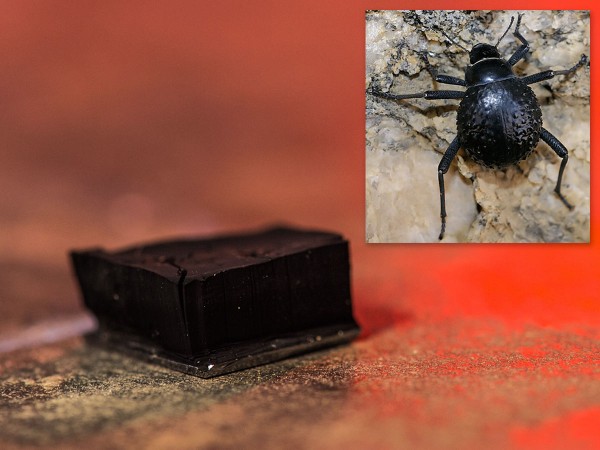By Anupum Pant
Background
Things absorbing water from the air is nothing new. Hygroscopic substances – or substances which have ability to attract and hold water molecules from the surrounding environment – have always been around. Coffee powder for instance is one great example – leave the dry coffee powder in the open and it will turn into a mushy matter within hours. Thanks to the moisture present in the air that it absorbs.
Hygroscopy in Nature
In the nature too, hygroscopy – the ability to extract water from thin air – has some peculiar functions. One fantastic example is the seed of the needle-and-Thread grass. This seed, with the help of a hygroscopic awn attached to it, can twist and untwist the screw like structure by releasing and absorbing moisture from the air. This way, it is able to dig its way into the ground. But that’s just one of the many examples of how hygroscopy is all around us. Here’s another one…
Thorny devil – an Australian lizard – lives in the arid scrubland and desert that covers most of central Australia. It has a hard time finding water in this dry place. So, blessed by the evolutionary forces of nature, the lizard has developed tiny hygroscopic channels between the spines on its back. These channels, working in tandem with a capillary action mechanism, are able to draw water from the air. Then their precise design makes the water move into the mouth of the lizard. Fascinating!
Other Ways
Although not exactly using hygroscopy, the Namib desert beetle, also does something similar – drawing water from thin air. Unlike the hygroscopic grooves of the thorny devil’s back, the desert dwelling beetle has developed some patterns on its hard wings which help it in drawing water from the air. These patterns include an array of hydrophobic and hydrophilic materials which are able to trap water from the foggy morning air and are able to channel it to the beetle’s mouth.
The Nanotube Sponge Mat
This particular beetle’s hard wings with magical patterns on it, intrigued a couple of researchers. They took cue from this natural material and were able to create an artificial mat which could absorb water from the air.
Although we do have commercial Atmospheric Water Generators (AWG) which can harvest water from the air and supply drinking water, the sad thing is that these things run on electricity. This new mat that was fabricated recently, using an array of carbon nano tubes sandwiched between hydrophilic and hydrophobic layers, doesn’t need any electricity to extract water.
This mat they’ve fabricated is smaller than your thumbnail, but it still works, and is able to extract about 1/4th of it’s weigh in water within a few hours. The researchers are working on it to make it more efficient. [more information] [Original Paper]
A couple of years back a US based startup, NBD Nano, was inclined on developing a water bottle based on the same Namib desert beetle principle. The much touted water bottle, they said, would be able to fill itself! I’m not sure where their project is headed today, but an auto-filling water bottle sure would be a product just too cool to not own by every kid at school!
Needless to say, it would probably make a huge difference by lowering greatly the number of people who don’t find clean drinking water every day – Just for the record, about 1/7th of the world population didn’t have access to clean water today.

